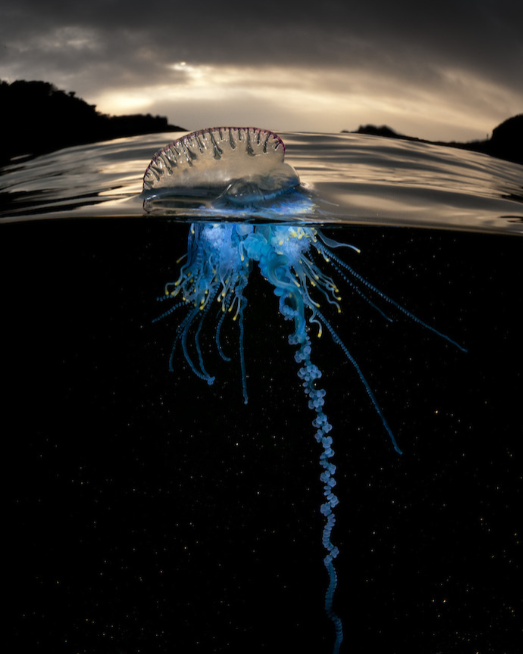Predatory Science at the Ocean's Apex
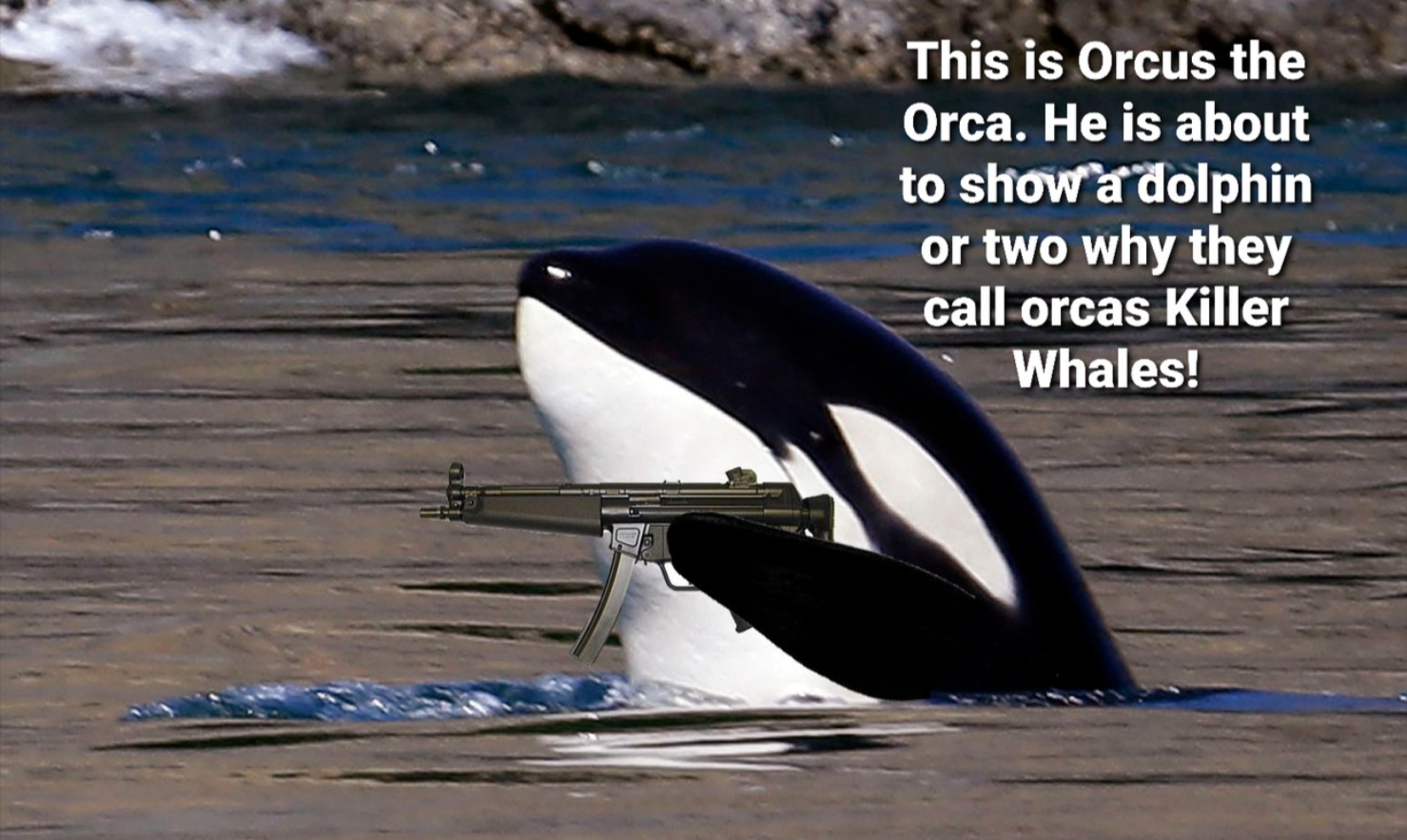
‘The deep sea is the largest museum on earth, it contains more history than all the museums on land combined, and yet we’re only now penetrating it.’ Robert Ballard, former US Navy officer.
The Earth has been our planet since the beginning of our species’ existence. Fast forward to the modern era and our understanding of space, the solar system and even our universe has greatly expanded. But what of our own planet and oceans? Oceans take up a whopping 71% of the Earth’s Surface, and only 5% of it has been fully explored and mapped. We know next to nothing of the ocean, evident from the 2000 new aquatic species we discover each year. Water provides an invaluable habitat due to its solvent and transparent properties, as well as maintaining stable temperatures resulting from its high specific heat capacity. The ocean paves the way for ecosystems to develop and thrive, and with it the inevitable formation of apex predators. So sit back for a deeper dive into the biology behind 3 marine predators, the culmination of 3.8 billion years of natural selection, and what exactly allows them to reign over the oldest habitat on our planet.
0 m-200 m – Epipelagic Zone (The Sunlight Zone)
The most explored and renowned zone of the ocean, the Sunlight Zone houses 90% of all discovered marine species in its borders, and is the only region to reliably support plant life due to the greatest exposure of sunlight for photosynthesis. This is essential to maintain a marine ecosystem, as algae detritus/phytoplankton (also known as marine snow) is even treasured by primary consumers in the ocean depths. Scroll further to the arctic north, where temperatures descend to as low as –69°c, and we encounter our first apex predator, Ursus Maritimus.
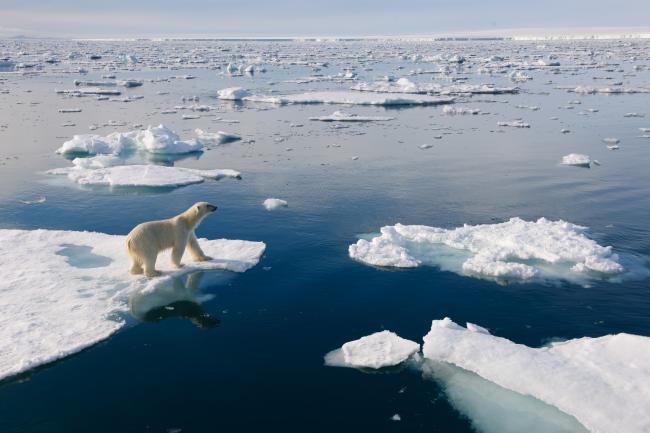
Polar bears are the only bear species to be classified as marine mammals, resulting from their primarily marine diet. Weighing up to 800kg, this species holds the right to be classified the largest land carnivore in the world. Winters in the Arctic are unforgiving; thus the polar bear’s meal consists of anything it can get its claws on: ringed seals, arctic foxes, or on occasions even Narwhals or Beluga whales! This is possible because of its adaptations to the harsh, frigid environment, such as:
- Black skin which is optimal for absorbing infra-red radiation and homeostasis
- Hollow shafts in fur which reflect light and appear white as camouflage from prey
- High-traction footpads with a papillary (uneven) surface to increase friction on sea ice
- Webbed feet which spread out its large weight preventing the cracking of ice as well as underwater propulsion to chase prey
- Efficient digestive system where 97% of fat consumed is absorbed - crucial during the summer season as sea ice melts and the abundance of prey decreases
200 m-1000 m – Mesopelagic Zone (The Twilight Zone)
As we descent into the Twilight Zone, the submerged height of the Burj Khalifa (830m), the variety of species dramatically changes. As any sunlight present is insufficient for photosynthesis, the Twilight Zone consists mainly of lowly detritivores feeding on marine snow and sharp-witted carnivores, such as the ferocious Xiphias Gladius.
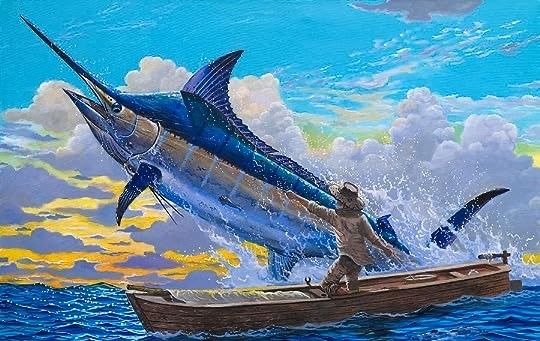
The Swordfish, apex predator of the Twilight Zone, is notorious for its long bill (a protruded upper jawbone) and shattering speeds up to 80mph! The so-called Gladiator of the Sea is the 3rd fastest fish in the world, and lives a nomadic lifestyle travelling up to 37 miles each day in search of prey. They spawn in tropical, temperate waters and later roam further north or south in an opportunistic style of hunting.
As the norm for any successful predator, the Swordfish has adapted via:
- Counter shading (dark grey on the top which fades into silver) allowing for omnidirectional camouflage
- Sword-like bill up to 1/3 of its body length which can be used to stun smaller prey and fend off other predators
- ‘Counter current heat exchange’ where blood vessels are redirected closely towards the brain, eyes and muscles, This is coupled with a modified Dorsal Rectus eye muscle, a thermogenic tissue rich with mitochondria which acts to conserve body heat and allow the Swordfish to traverse wide temperature ranges with optimal vision and cognition (5°c to 27°c)
- Oil producing organ which lies just above the bill, greasing its skin and causing a reduction in frictional drag due to oil’s hydrophobic properties
When thinking of the ocean’s apex predators, the great white shark always comes to mind with its rows of fear-inducing teeth featuring in almost every thalassophobic documentary. Despite common belief, the great white shark does have a known natural predator which outmatches it in both size and speed. The Orcinus Orca, named after Orcus, Roman god of the underworld, is widely considered to be the one true apex predator of the ocean, hunting sharks through surgical precision by surrounding and targeting weak areas such as the soft underbelly, stunning the shark . This behemoth on average weighs up to 7000kg and inhabits every ocean in the world. Unlike the solitary hunters of the polar bear and the swordfish, the Orca is renowned for its efficient and intellectual hunting through pods of up to 40.
But what exactly allows the Killer Whale to rule over a 3.8-billion-year-old ecosystem?
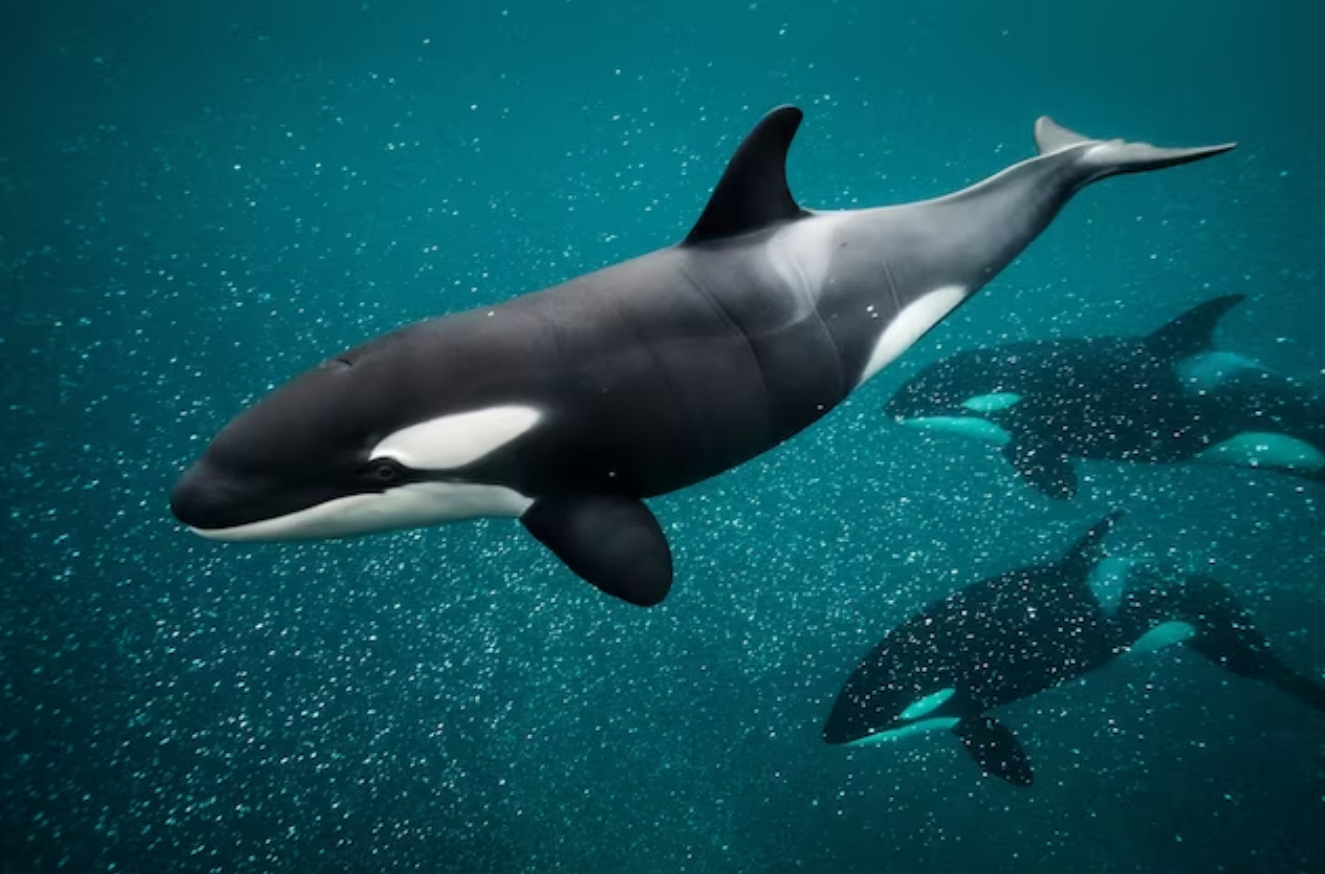
- Echolocation via production of high-frequency linear soundwaves which travel up to 800m away, reflecting the echo back to the orca (used both for pack communication and detecting prey). These soundwaves are focused into a concentrated beam by a fatty organ above the orca’s mouth known as a ‘melon’. Incoming waves are then received in the orca’s lower ear via the lower jaw. The returning echo structure can then be used to identify fish species, shape and size even in the dark layers of the Twilight Zone
- Intelligence which rivals humans, their brains are up to 5x the side of humans, amounting to the largest brain in the animal kingdom second only to sperm whales. Further research has discovered the existence of an enlarged insular cortex in Orcas which is responsible for the development of emotions, memory, and even self-awareness, allowing for the experience of complex emotions such as love, empathy and grief. These factors strengthen bonds between individuals and form the basis of orca survival, both in group hunting and the apprenticeship of young orcas in hunting skills by older members of the pod. Orcas also boast the most gyrified brain in the world, gyrification being an indication of high processing and handling of data. It is commonplace for pods to work as a team via this intelligence, such as orcas coordinating dives to knock seals off sea ice or even intentionally beaching themselves to catch sealions off guard
- Orcas are the only apex predator to have a form of culture, and there will be several variations of characteristics based on an Orca’s pod, such as diet, habitat, hunting methods and even local dialect. One such example is the Southern Resident killer whale which mainly prey on squid and Chinook salmon, directly contrasting Transient killer whales who focus on seals, dolphins and even other whale species! This in some sense solidifies the killer whale's intelligence by reducing competition and maximizing use of the surrounding environment. Culture is an essential difference in why the killer whale stands upon the marine food chain, as customs, techniques and social behavior are passed down to offspring allowing future orca generations to perform the identical coordinated hunts as their predecessors. In some sense, this makes Orcas the most identical and relatable species to us as human beings
This article has barely breached the surface of life in the ocean, failing to mention the Bathypelagic, Abyssopelagic or Hadopelagic Zones. From the sunny shores of Hawaii to the murky depths of Challenger Deep (10,924m), the ocean is a crucial ecosystem which houses many mysteries below its sunken surface, providing up to 70% of the Earth’s oxygen and regulating the climate via the movement of heat and moisture in currents. Couple that with the less than 250,000 discovered marine species out of an estimated 2 million as stated by the World Register of Marine Species and we come to realize how essential the ocean is for life on Earth, how little we truly understand of our own planet, along with the rare resources, unique habitats and abundant biodiversity we risk destroying.
If this article has piqued your interest, here are some interesting links to check out!
https://www.bbc.com/future/article/20230209-how-deep-sea-creatures-are-discovered
https://www.bbc.com/future/article/20230711-why-we-keep-discovering-new-species-of-sharks
